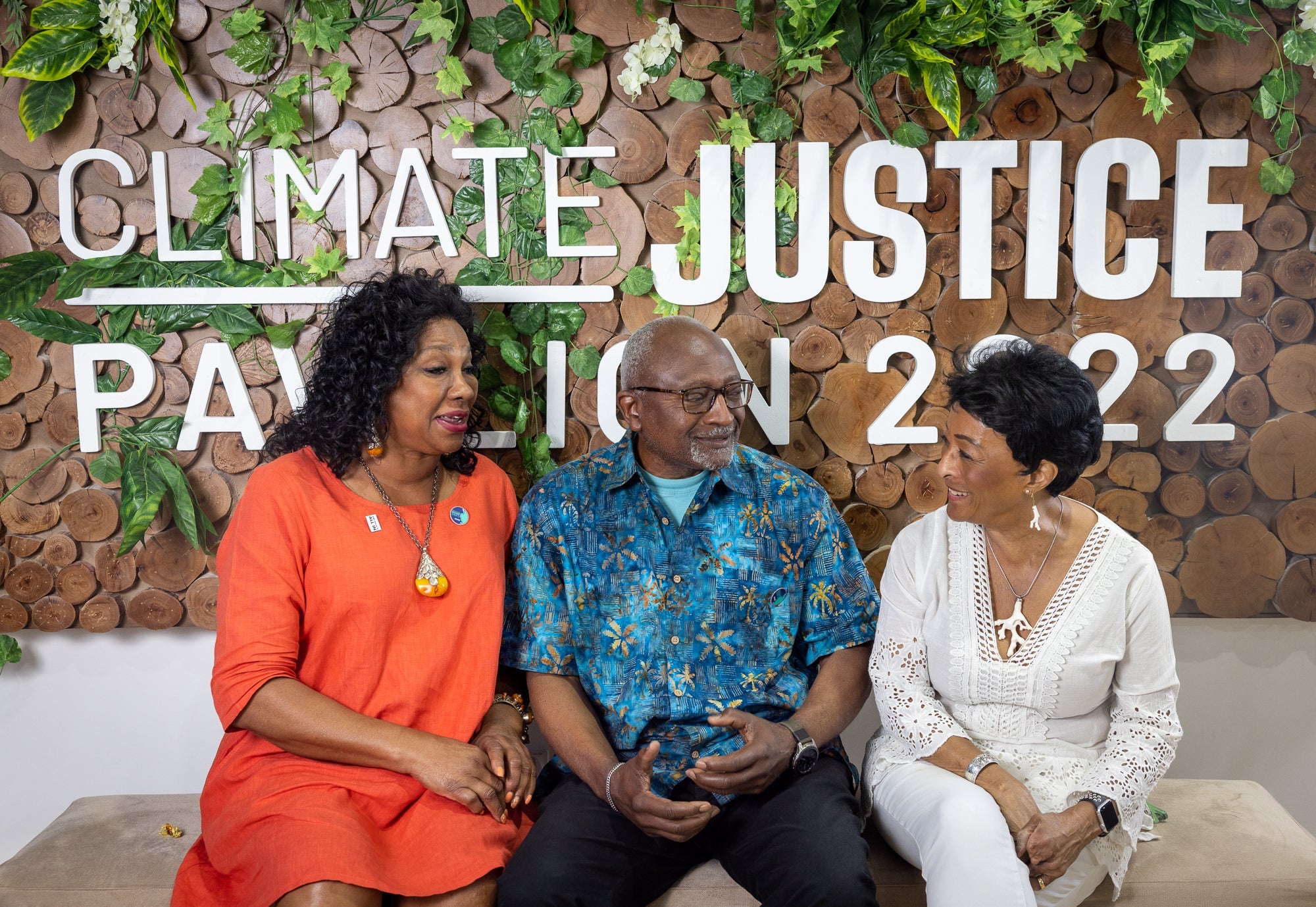What We Saw at COP27: Lackluster Outcomes but Hopeful Connections
Centering justice and community at the UN Climate Summit in Sharm El-Sheikh, Egypt.
This year’s UN climate summit, COP27, brought an estimated 30,000 people to Egypt with the goal of enhancing global cooperation to address climate change. Billed as the “Africa COP,” the event brought headline focus to the question of whether wealthy, high-emitting countries including the U.S. will provide funds to low-emitting, low-income countries that are now forced to cope with a crisis they did not create.
In response to effective pressure from civil society and frontline countries, COP concluded with a breakthrough agreement to establish a “loss and damage” fund, reflecting, among other things, a just-in-time reversal in position by the U.S. While this agreement is a major step forward, there is big work ahead to determine how it will be funded in practice.
Meanwhile, progress stalled on commitments to phase out fossil fuel use, which is, of course, the core driver of loss and damage. With a record number of fossil fuels representatives at COP, and intensifying pressure to develop oil and gas, including in Africa, there was a significant danger of backtracking from commitments made at last year’s UN climate summit. Negotiators managed to avoid major steps backward, but COP’s outcome does not reflect the non-negotiable climate reality that further fossil investment must end.
That said, our team is coming away from COP with a sense of hope and purpose.
The passage of major climate legislation in the U.S. is creating palpable momentum for a global clean energy transformation. The appearance of Brazil’s President-elect Luiz Inácio Lula da Silva (aka Lula) and his recommitment to protecting the Amazon elicited a jubilant response. Natural solutions to address both climate change and biodiversity loss were a buzzing topic for events and discussions of all kinds in the sprawling maze of pavilions created by governments and NGOs.
For us at Earthjustice, what most powerfully defined COP this year was the growing, maturing movement for climate justice that is uniting lifelong leaders and brilliant youth activists.
At the Climate Justice Pavilion – which was conceived and brought to life by the Bullard Center for Environmental and Climate Justice at Texas Southern University, the Deep South Center for Environmental Justice, and We Act for Environmental Justice – people from around the world found a space to connect with three revered, foundational leaders of the U.S. environmental justice movement: Dr. Beverly Wright, Peggy Shepard, and Dr. Robert Bullard.
“We are building home,” Dr. Bullard told us. “In the past, we’ve come to COP, but we didn’t have a place that was ours, a place where we were truly welcome. Not this year. This year we have a home.”
For decades, many in the U.S. environmental justice movement have not had access to the inside or so-called “Blue Zone” of the COP. This year, that changed, although the necessary visas and badges that are required to attend the COP were disgracefully hard to come by – especially for Africans and representatives of small groups as opposed to large, well-resourced institutions. Earthjustice was honored to support both the first-of-its-kind pavilion and attendance by exceptional young leaders.
Throughout the two-week conference, the Climate Justice Pavilion hosted panel discussions and programming, giving an extraordinary array of change-makers a platform to share their expertise and strategic insights. COP attendees were able to learn more about everything from Indigenous climate adaptation efforts, to petrochemicals fights, to citizen science, to regulation and public interest advocacy that center people and their lived experiences. The space seeded connections and collaborations among communities of color and justice movements around the world.
Powerful political leaders from around the world came to the Climate Justice Pavilion. House Speaker Nancy Pelosi, former Vice President Al Gore, Environmental Protection Agency administrator Michael Regan, and Council for Environmental Quality Chair Brenda Mallory were just some of the prominent U.S. leaders who came to engage.
Amid the maelstrom of events at COP, there were so many happy, accidental meetings, unexpected learnings, generative conversations, and fortuitous reunions. It was a privilege for our small delegation to attend. In addition to providing support for the Climate Justice Pavilion, we were also able to strategize with partner legal organizations across Africa and meet with officials from the U.S. Department of Energy and the White House in a setting that vividly illuminated the stakes for U.S. climate leadership.
At the end of a busy two weeks, we are keenly feeling the disconnect between what the world needs and what the country delegates negotiated. But we also know that wealthy countries including the U.S. can and must go above and beyond the floor of agreements coming out of Sharm El-Sheikh. U.S. support for language supporting a phase-out of coal, gas, and oil reflects the global clean energy transition that is irreversibly underway. And, what we saw in action in Egypt is a global movement for climate justice that is rapidly gaining in scale, intensity, and power.
